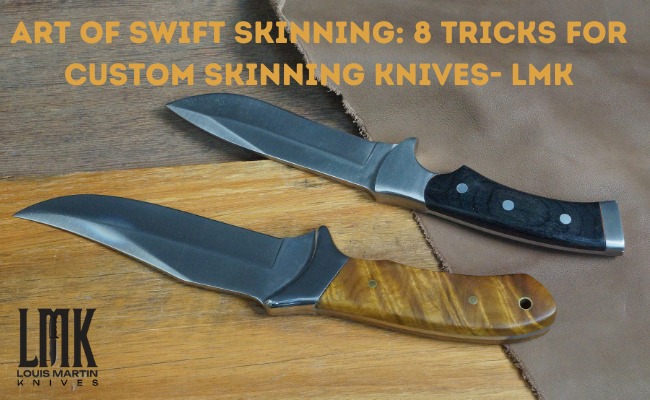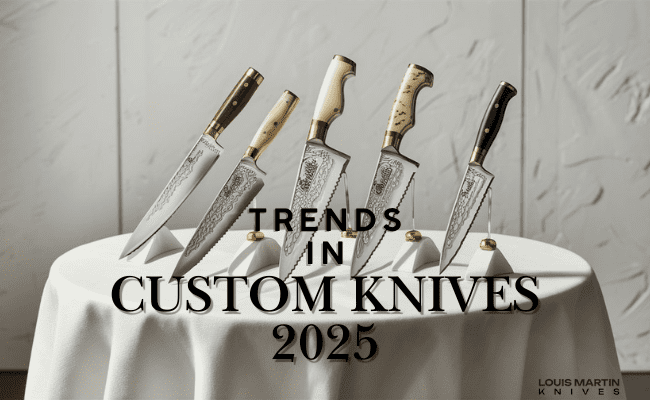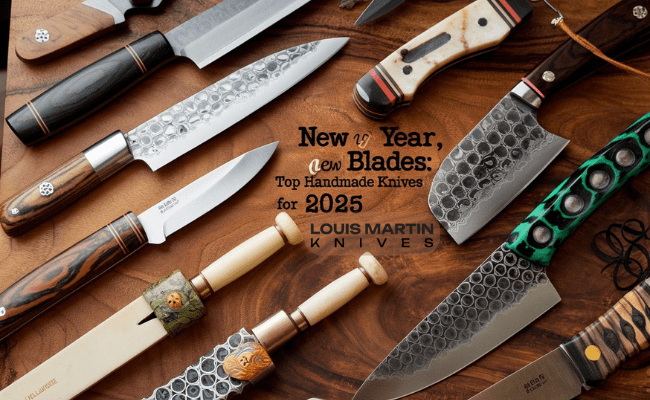In outdoor pursuits, a well-crafted skinning knife is an indispensable tool. Whether you’re a seasoned hunter, a survivalist, or an avid camper, having the right knife can make all the difference in efficiently and effectively preparing game or processing meat.
Custom knives, in particular, offer a level of craftsmanship and functionality that can elevate your experience. To truly excel in the art of swift skinning, mastering a few key techniques and tricks is essential. In this guide, we’ll explore eight invaluable tips for maximizing the performance of your custom skinning knives.
Choose the Right Blade Design:
The foundation of efficient skinning lies in selecting the appropriate blade design for your skinning knife. A blade crafted specifically for skinning tasks ensures optimal performance and ease of use. Look for features such as a curved edge, which facilitates smooth and controlled slicing motions, and a sharp point for piercing tough hides with precision. Additionally, consider blades with specialized features like gut hooks or drop-points, designed to streamline the skinning process further. By investing in a Best skinning knife with the right blade design, you set yourself up for success and maximize your efficiency in the field.
Optimize Blade Sharpness:
Sharpness is paramount when it comes to skinning knives Dull blades not only make the skinning process more difficult and time-consuming but also increase the risk of accidents due to slippage. Keep your Sharpest skinning knife razor-sharp by regularly honing and sharpening the blade. Invest in high-quality sharpening tools and techniques, such as whetstones or diamond sharpeners, to maintain optimal sharpness. Additionally, consider carrying a portable sharpening tool in the field to ensure your knife remains in peak condition.
Master Proper Grip and Technique
Mastering proper grip and technique is paramount when wielding a skinning knife. The way you hold and maneuver the knife can significantly impact the efficiency and safety of the skinning process. Practice different grips and techniques to find what works best for you and your skinning knife. Experiment with variations in hand placement, angle of approach, and slicing motion to achieve optimal results. With consistent practice and attention to detail, you’ll develop the finesse and confidence needed to handle your best skinning knife with precision and ease, ensuring smooth and swift skinning every time.
Utilize Leverage for Efficiency
Leverage plays a crucial role in swift skinning, especially when dealing with the larger or tougher games. Maximize leverage by positioning your hand and wrist effectively, using the natural mechanics of your body to your advantage. Apply controlled pressure and leverage to guide the blade through the skin and tissue with minimal resistance. Additionally, leverage can help conserve energy and reduce fatigue during prolonged skinning sessions, allowing you to maintain peak performance.
Employ Proper Knife Maintenance
Proper maintenance is essential for preserving the performance and longevity of your custom skinning knife. After each use, clean the blade thoroughly to remove any traces of blood, fat, or debris that could compromise its sharpness and functionality. Dry the knife completely to prevent corrosion and rust, especially if it has a high-carbon steel blade. Periodically inspect the knife for signs of wear or damage, such as nicks or chips, and address any issues promptly to prevent further deterioration. Regular oiling of the blade and handle can also help protect against moisture and corrosion, ensuring that your skinning knife remains in optimal condition for years to come. Remember, a well-maintained skinning knife is not only safer to use but also performs better, making each skinning task more efficient and enjoyable.
Enhance Grip and Control
A secure grip is paramount when wielding a skinning knife, particularly in challenging or adverse conditions. Enhance grip and control by choosing a knife with an ergonomic handle design crafted from durable materials such as wood, G-10, or micarta. Textured or contoured handles offer enhanced grip and stability, even when wet or slippery. Consider adding a lanyard or wrist strap to your knife for added security and peace of mind during intense skinning tasks.
The Best Knife For Grip and Control
CUSTOM HAND-MADE DAMASCUS STEEL SKINNER KNIFE BONE &WOOD HANDLE
Adapt to Different Games and Environments
Versatility is key when it comes to mastering swift skinning with your custom skinning knife. Adapt your technique and approach based on the type of game you’re processing and the environmental conditions you’re facing. Different animals may require varying skinning methods and strategies, so familiarize yourself with the anatomy and behavior of your target species. Likewise, adjust your grip, pressure, and angle to accommodate factors such as temperature, humidity, and terrain. Remember, the versatility of your skinning knife allows you to seamlessly transition between different tasks and environments, ensuring optimal performance in any situation.
Practice and Patience
As with any skill, mastering swift skinning with your Skinning knife requires practice, patience, and perseverance. Dedicate time to honing your technique and refining your skills through consistent practice and experimentation. Challenge yourself with different cuts, angles, and scenarios to expand your proficiency and confidence. Embrace the learning process, and don’t be discouraged by setbacks or mistakes. With determination and dedication, you’ll gradually become a master of swift skinning with your custom knife.
Conclusion:
Mastering the art of swift skinning with your custom knife is a rewarding journey that requires dedication, skill, and the right tools. By following these 8 tricks and techniques, you can maximize the performance and efficiency of your skinning knife, ensuring clean and precise results every time.
FAQS
What makes a skinning knife different from other types of knives?
Skinning knives are specifically designed for efficiently removing the skin from game animals. They typically feature a curved blade with a sharp point, facilitating precise cuts and maneuverability around joints and contours.
How often should I sharpen my skinning knife?
It’s recommended to sharpen your skinning knife regularly to maintain optimal sharpness. Depending on usage and the condition of the blade, this could range from after every use to every few sessions. Pay attention to the blade’s performance and sharpness, and sharpen as needed.
What’s the best way to clean and maintain a custom skinning knife?
After each use, clean the blade thoroughly with warm, soapy water to remove any traces of blood, fat, or debris. Dry the knife completely to prevent corrosion and rust, and store it in a dry, cool place. Periodically inspect the knife for signs of wear or damage, and address any issues promptly.
How can I improve my grip and control when using a skinning knife?
Choose a skinning knife with an ergonomic handle design crafted from durable materials for enhanced grip and stability. Additionally, practicing proper grip and technique, as well as utilizing textured or contoured handles, can help improve control even in challenging conditions.
Are there specific techniques for skinning different types of game?
Yes, adapting your technique based on the type of game you’re processing is essential for efficient and effective skinning. Different animals may require varying methods and strategies, so familiarize yourself with the anatomy and behavior of your target species to ensure optimal results.











